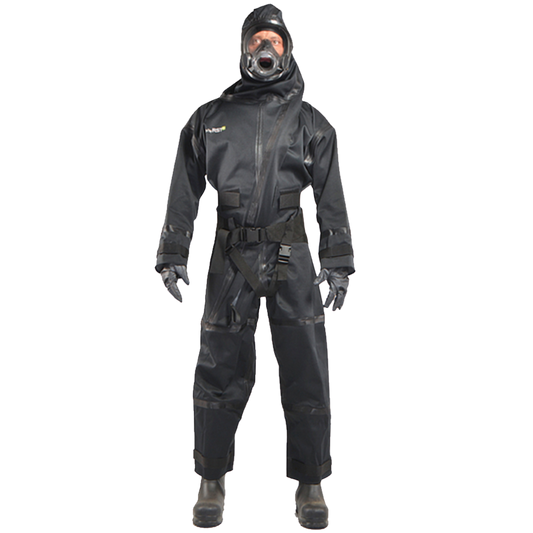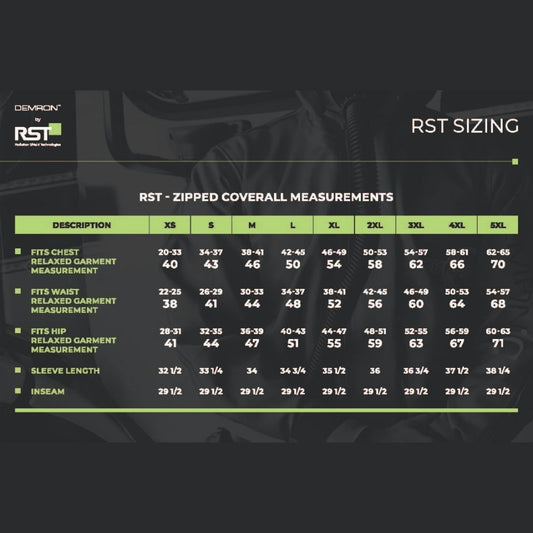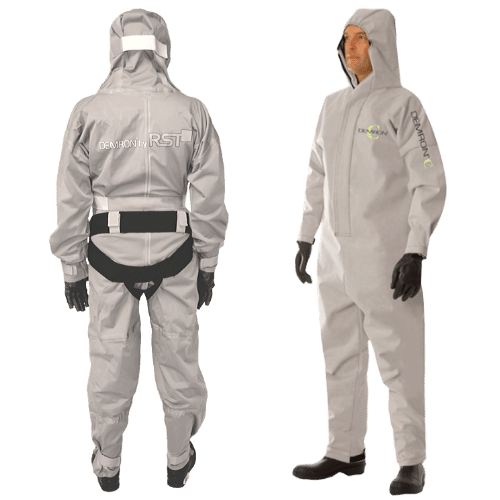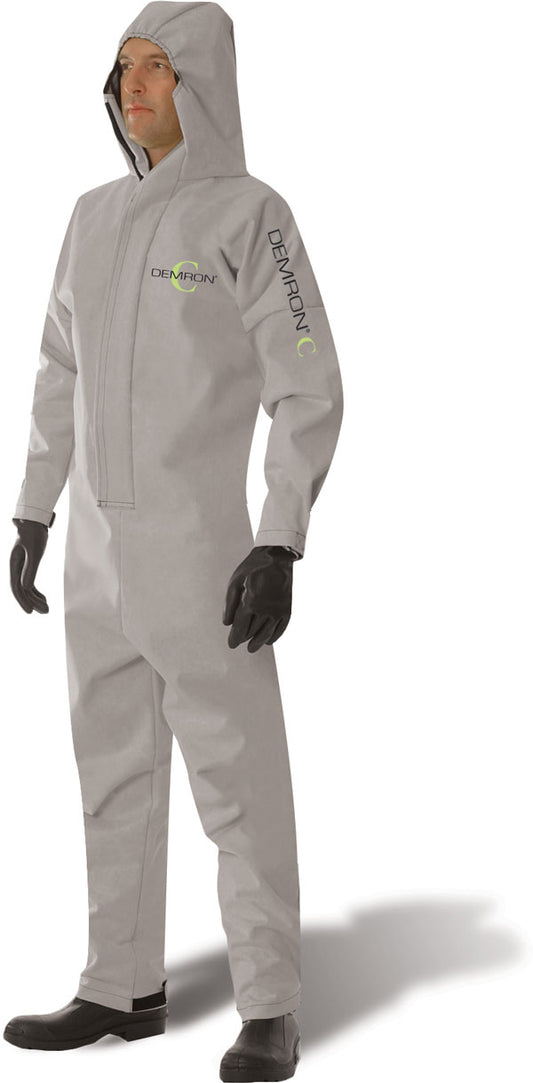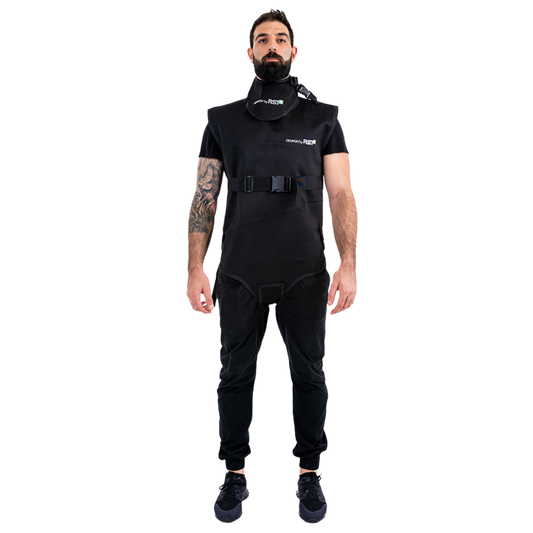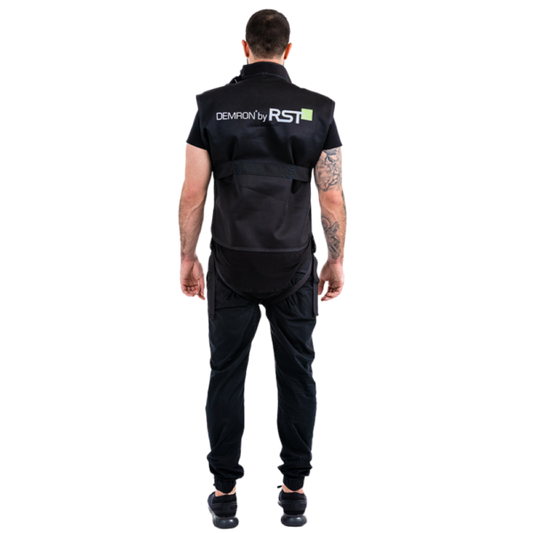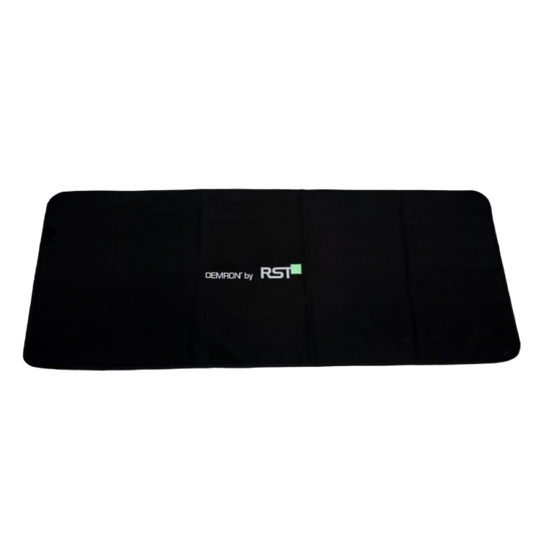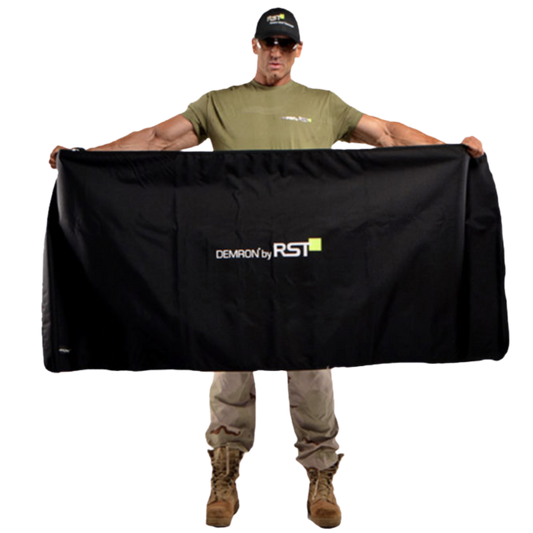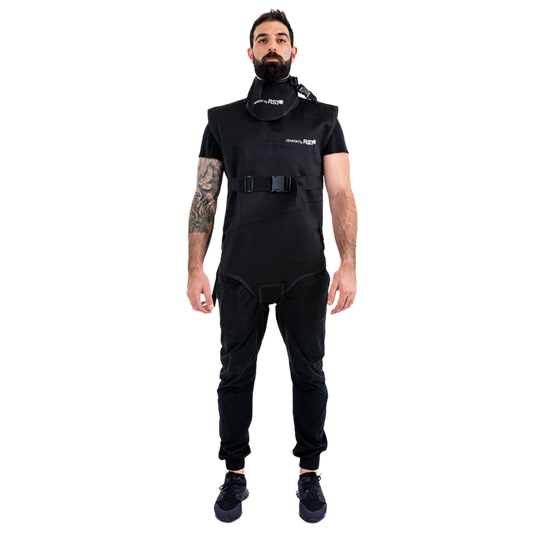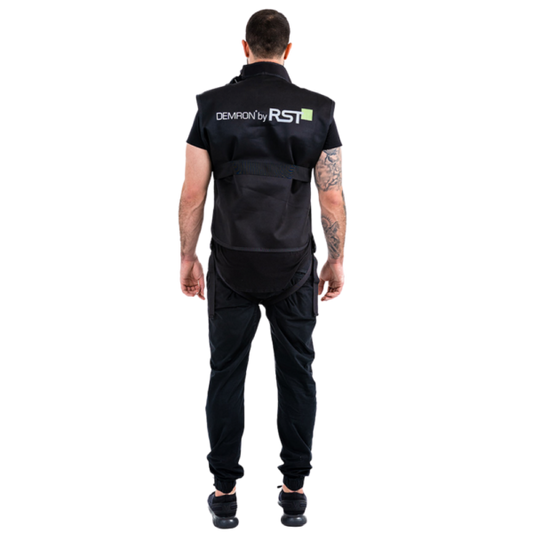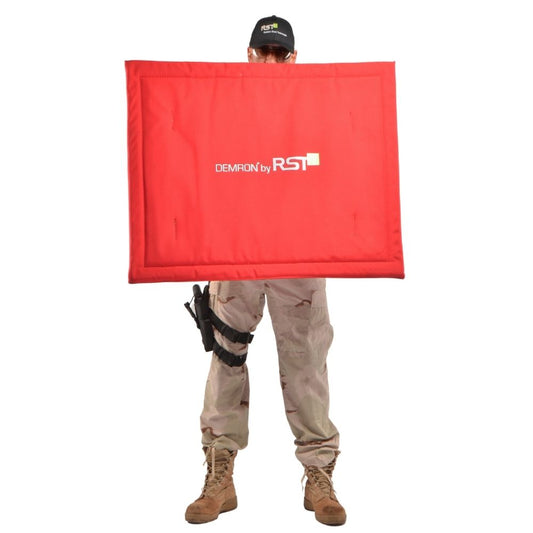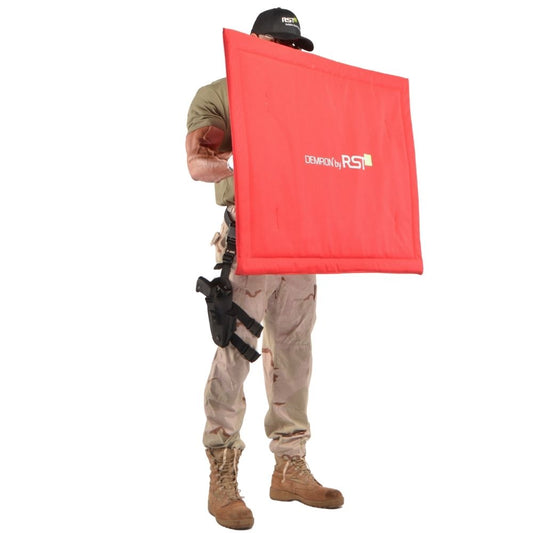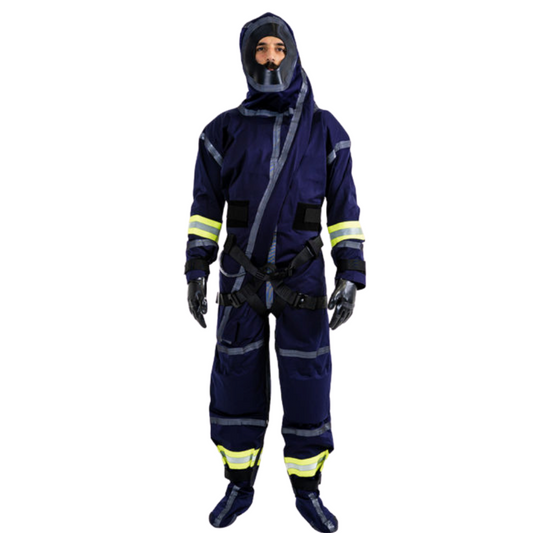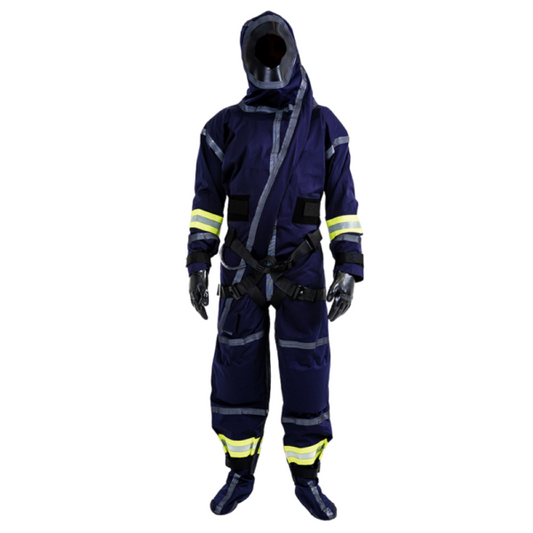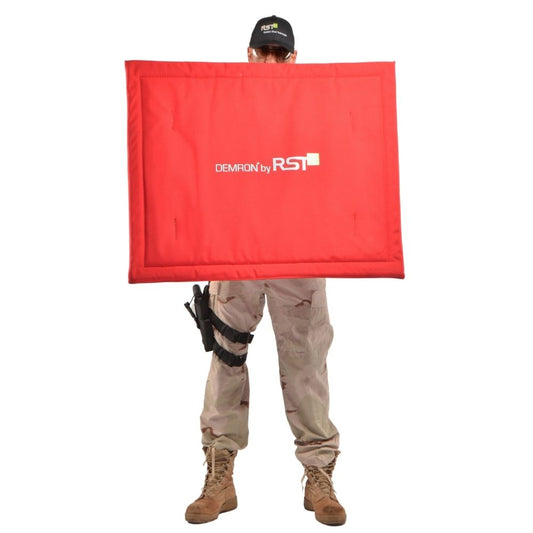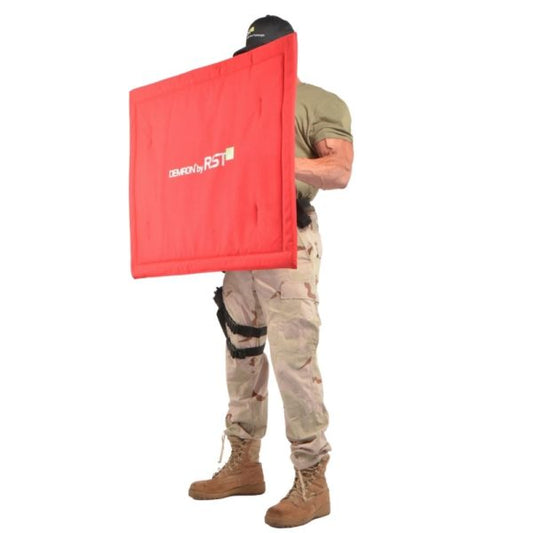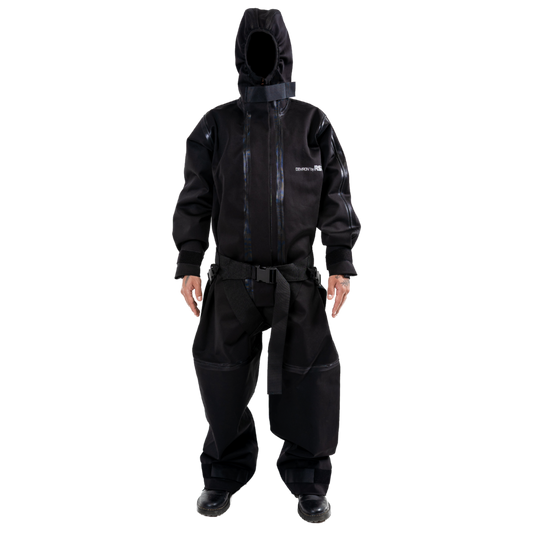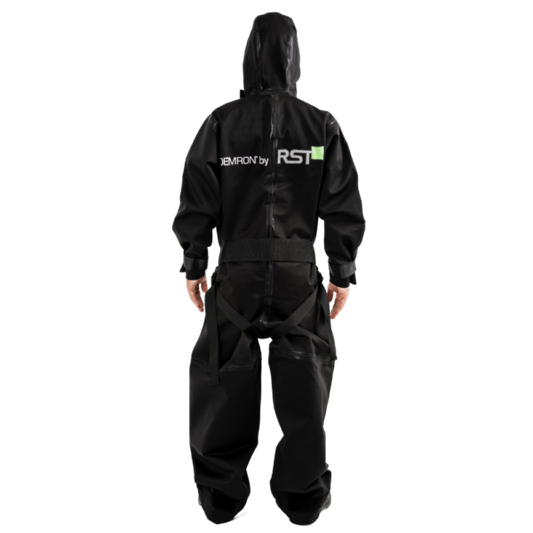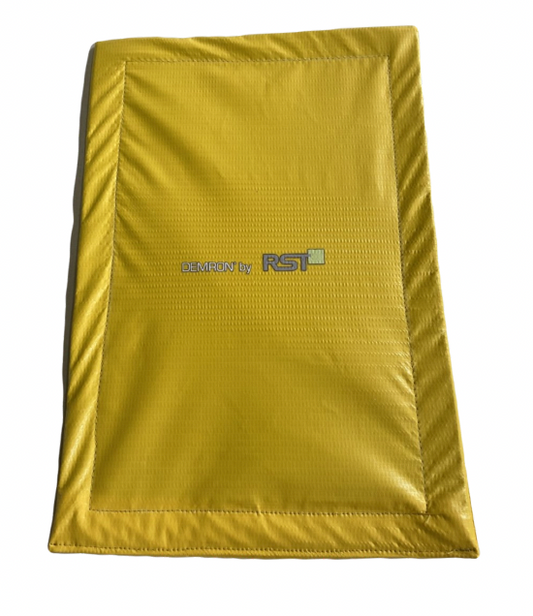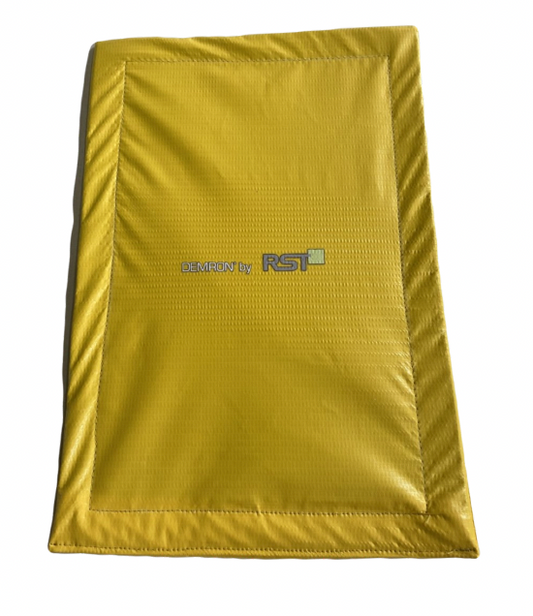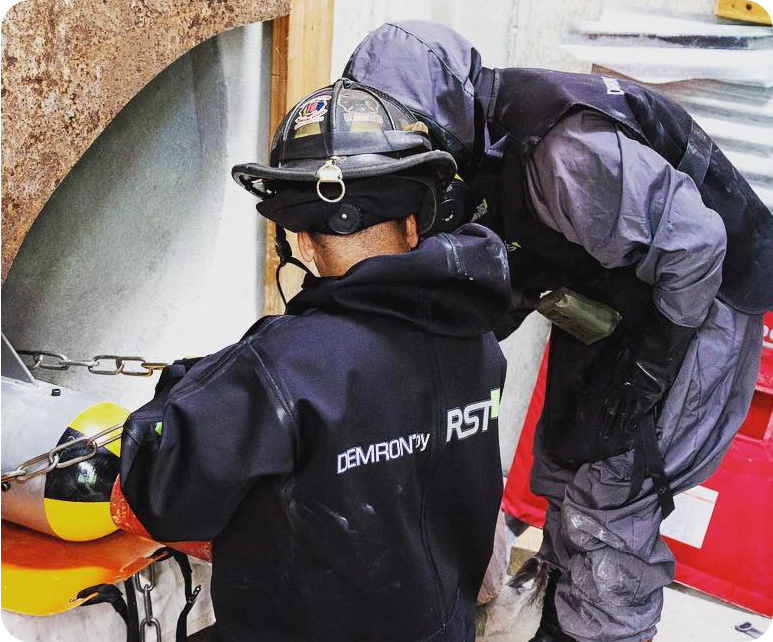
The Radshield Technology
The material has radiation protection similar to lead shielding, while being lightweight and flexible. The composition of Demron is proprietary, but is described as a non-toxic polymer. Demron shields the wearer from radiation alone, it can be coupled with different protective materials to block chemical and biological threats as well. Demron is roughly three to four times more expensive than a conventional lead apron, but can be treated like a normal fabric for cleaning, storage and disposal.
More recent uses for Demron include certified first responder hazmat suits as well as tactical vests. Demron is proven by the United States Department of Energy to significantly reduce high energy alpha and beta radiation, and reduce low energy gamma radiation. When several sheets of Demron are laminated together the result is a much more powerful shield, though Demron cannot completely block all gamma radiation.
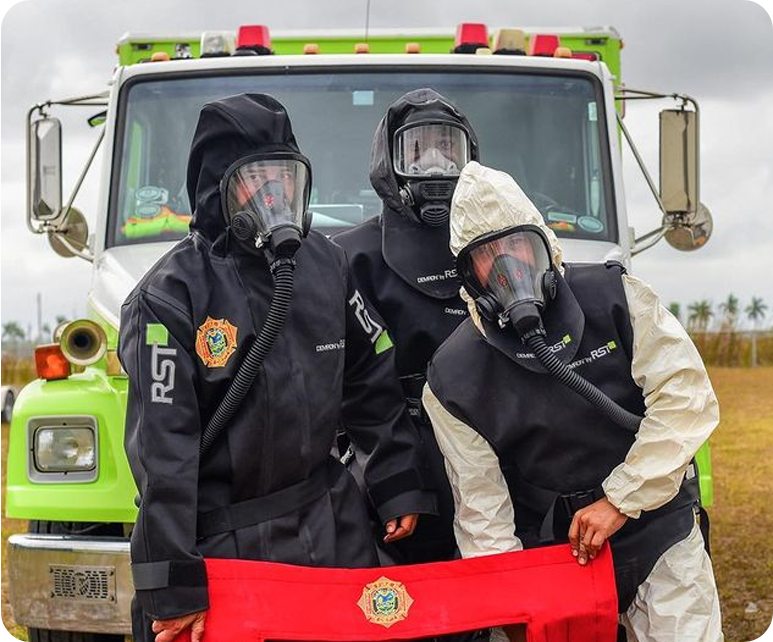
Demron®
Demron® is a type of personal protective equipment designed to shield the wearer from exposure to ionizing and non-ionizing radiation. Made from a proprietary blend of materials, it is considered to be one of the most effective and versatile forms of radiological protection available today.
First developed in 2003 by Radiation Shield Technologies (RST), Demron was initially designed to protect military personnel from the harmful effects of nuclear fallout on the battlefield. However, its unique properties and high level of radiation protection quickly caught the attention of other industries, including medical, nuclear, and emergency services.
What sets Demron apart from other types of radiation protection is its ability to block virtually all types of ionizing radiation, which includes gamma rays, X-rays, and beta particles. Unlike traditional lead-based materials that only offer partial protection, Demron is capable of absorbing and neutralizing radiation at the molecular level.
In addition to its superior radiation protection, Demron is also highly flexible and lightweight, making it comfortable to wear for extended periods of time. It can be used in a variety of settings, including hospitals, laboratories, nuclear power plants, and emergency response situations.
One of the most high-profile uses of Demron was during the cleanup of the Fukushima nuclear disaster in 2011. Japanese authorities provided Demron suits to workers responsible for removing radioactive debris, helping to protect them from exposure to harmful radiation.
Several independent studies have also confirmed the effectiveness of Demron in protecting against radiation exposure. In one study conducted by researchers at Duke University, Demron was found to be highly effective at blocking gamma radiation at various levels of intensity.
Demron represents a significant breakthrough in the field of radiological protection, offering unparalleled levels of radiation shielding in a lightweight and flexible material. As the threat of nuclear incidents and other forms of radiation exposure continues to rise, Demron will undoubtedly remain an important tool for protecting the health and safety of workers in a range of industries.
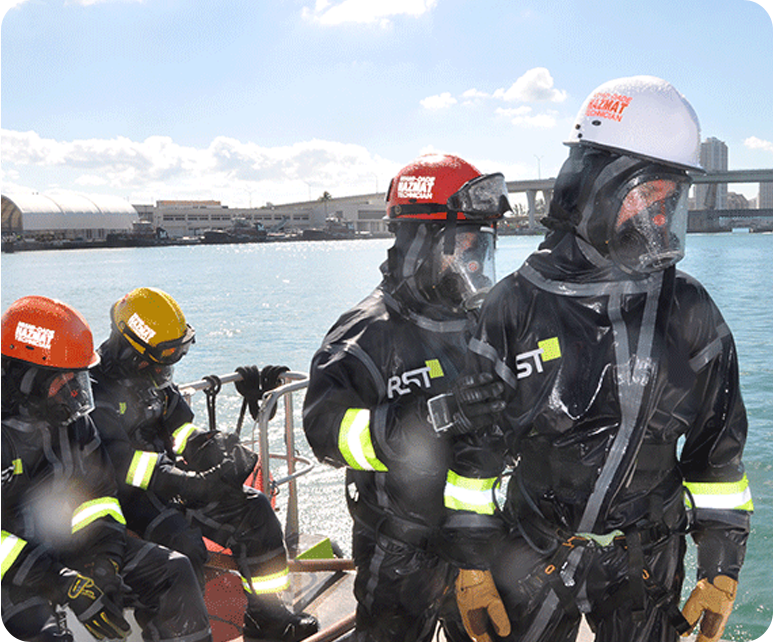
Demron C Test Report
The following files document testing performed on Demron®
- Demron C 16604 Viral Penetration Final Report »
- Demron C ASTM 1671 Final Report »
- Demron C Chem Testing Pass April »
- Demron C Full Suit FDA Compliance »

